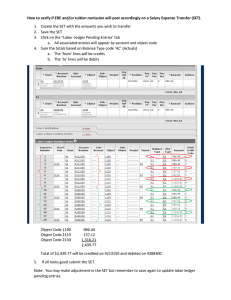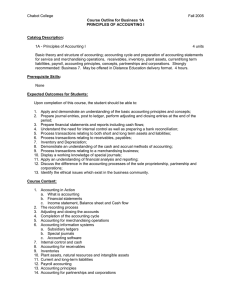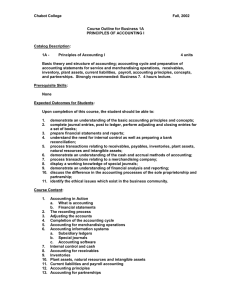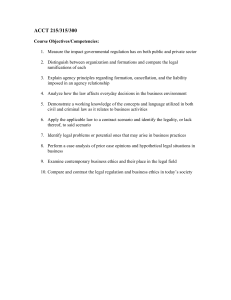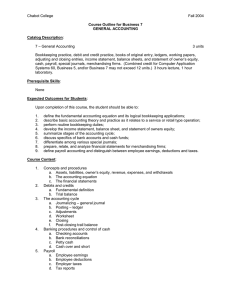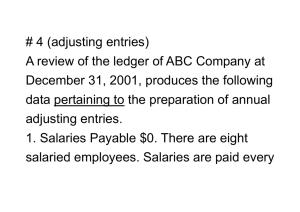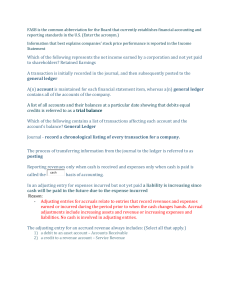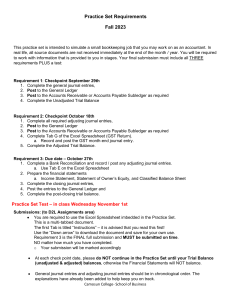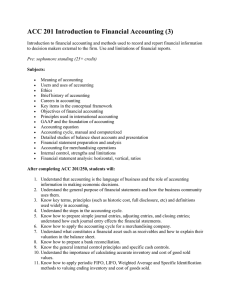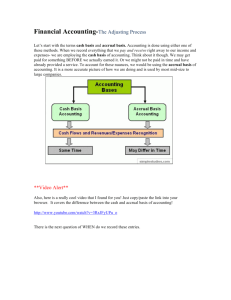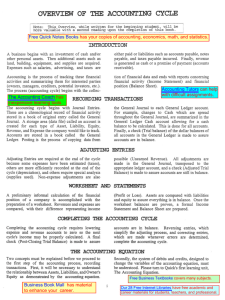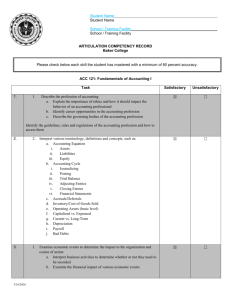COMMISSION ON HIGHER EDUCATION
advertisement
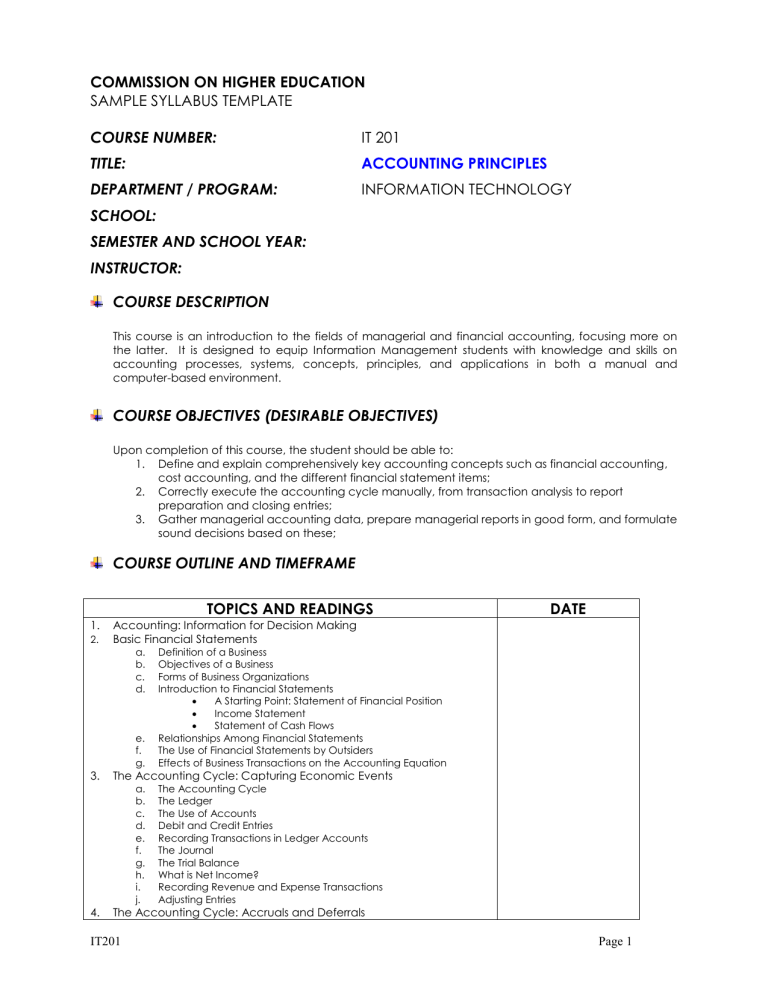
COMMISSION ON HIGHER EDUCATION SAMPLE SYLLABUS TEMPLATE COURSE NUMBER: IT 201 TITLE: ACCOUNTING PRINCIPLES DEPARTMENT / PROGRAM: INFORMATION TECHNOLOGY SCHOOL: SEMESTER AND SCHOOL YEAR: INSTRUCTOR: COURSE DESCRIPTION This course is an introduction to the fields of managerial and financial accounting, focusing more on the latter. It is designed to equip Information Management students with knowledge and skills on accounting processes, systems, concepts, principles, and applications in both a manual and computer-based environment. COURSE OBJECTIVES (DESIRABLE OBJECTIVES) Upon completion of this course, the student should be able to: 1. Define and explain comprehensively key accounting concepts such as financial accounting, cost accounting, and the different financial statement items; 2. Correctly execute the accounting cycle manually, from transaction analysis to report preparation and closing entries; 3. Gather managerial accounting data, prepare managerial reports in good form, and formulate sound decisions based on these; COURSE OUTLINE AND TIMEFRAME TOPICS AND READINGS 1. 2. a. b. c. d. e. f. g. 3. Definition of a Business Objectives of a Business Forms of Business Organizations Introduction to Financial Statements A Starting Point: Statement of Financial Position Income Statement Statement of Cash Flows Relationships Among Financial Statements The Use of Financial Statements by Outsiders Effects of Business Transactions on the Accounting Equation The Accounting Cycle: Capturing Economic Events a. b. c. d. e. f. g. h. i. j. 4. DATE Accounting: Information for Decision Making Basic Financial Statements The Accounting Cycle The Ledger The Use of Accounts Debit and Credit Entries Recording Transactions in Ledger Accounts The Journal The Trial Balance What is Net Income? Recording Revenue and Expense Transactions Adjusting Entries The Accounting Cycle: Accruals and Deferrals IT201 Page 1 a. b. 5. 6. 7. 8. 9. Adjusting Entries Adjusting Entries and Accounting Principles The Accounting Cycle: Reporting Financial Results a. b. c. d. e. The Worksheet Preparing Financial Statements Relationship among the Financial Statements Closing the Temporary Equity Accounts After-Closing Trial Balance a. b. c. Merchandising Companies Perpetual Inventory Systems Periodic Inventory Systems a. b. Management Accounting: Basic Framework Accounting for Manufacturing Operations Accounting for Merchandising Activities Management Accounting: A Business Partner Cost-Volume-Profit Analysis a. b. Cost-Volume Relationships Cost Behavior and Operating Income Sample Accounting Packages REQUIRED READINGS SUGGESTED READINGS COURSE REQUIREMENTS CONSULTATION HOURS IT201 Page 2
